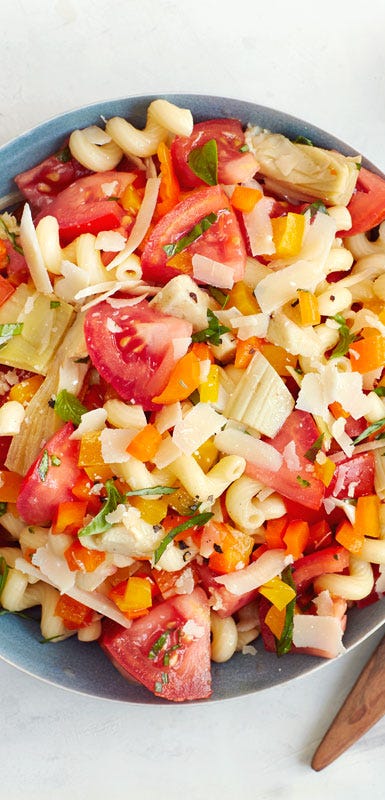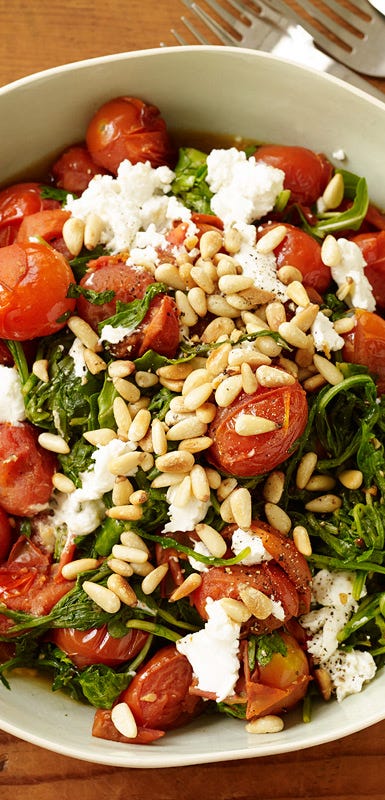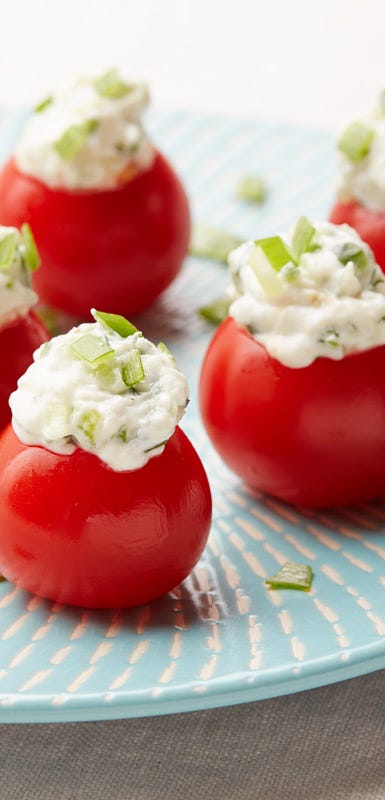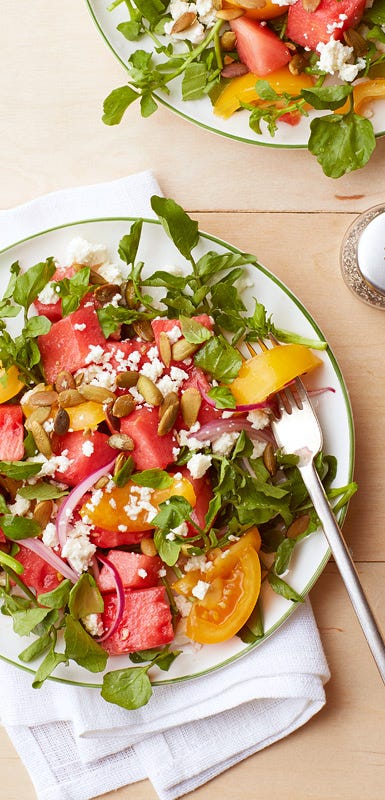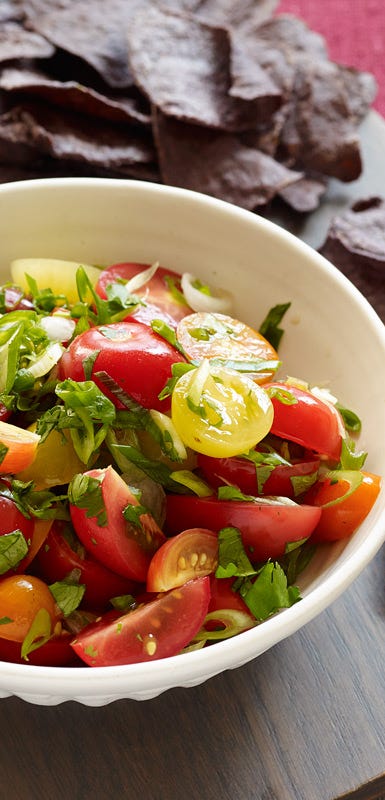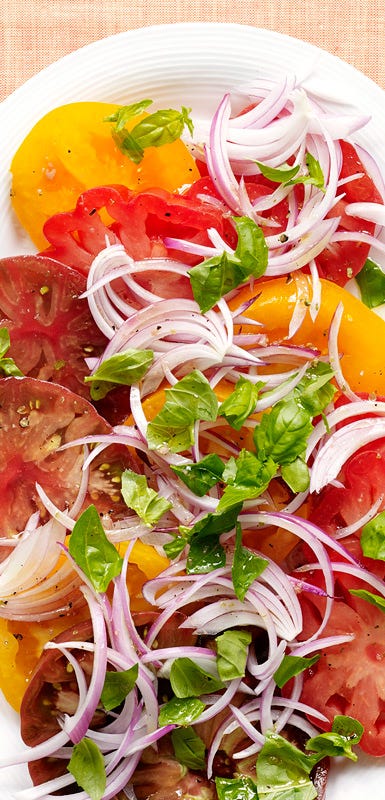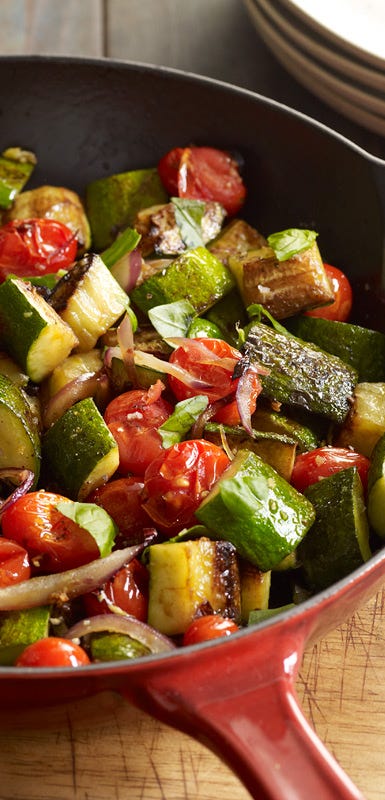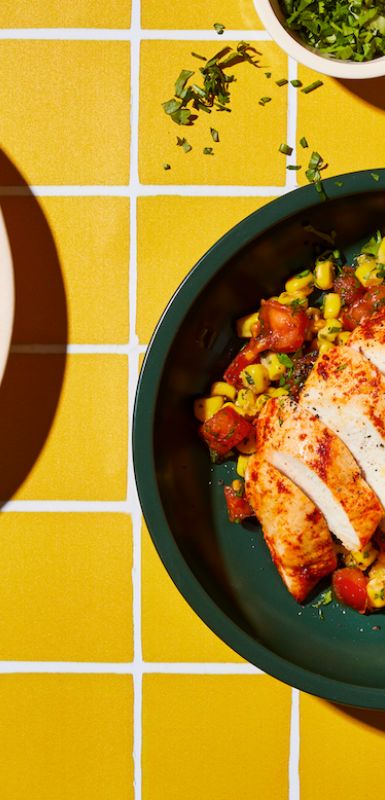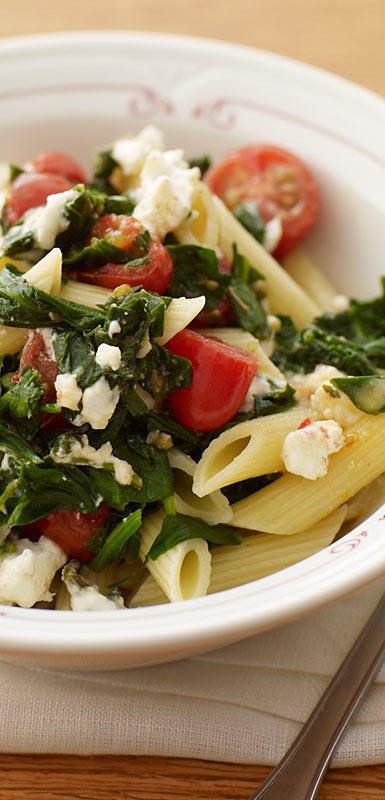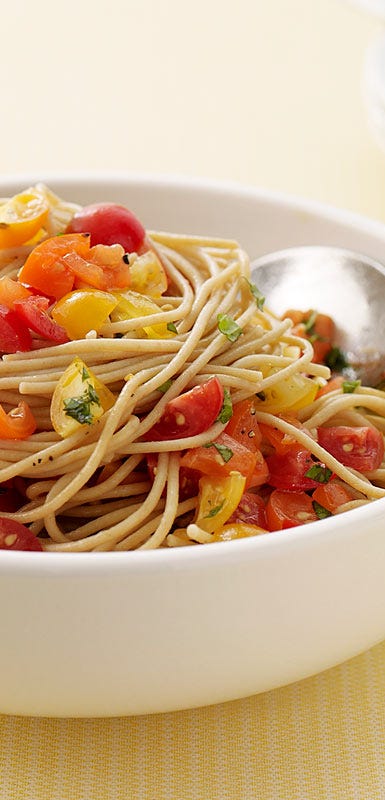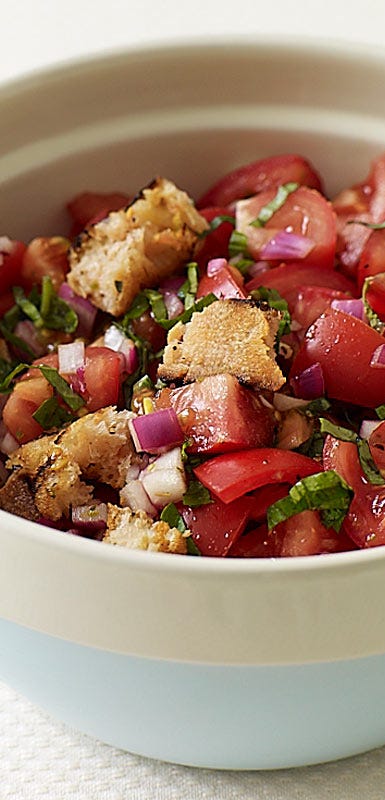The Skinny on Tomatoes
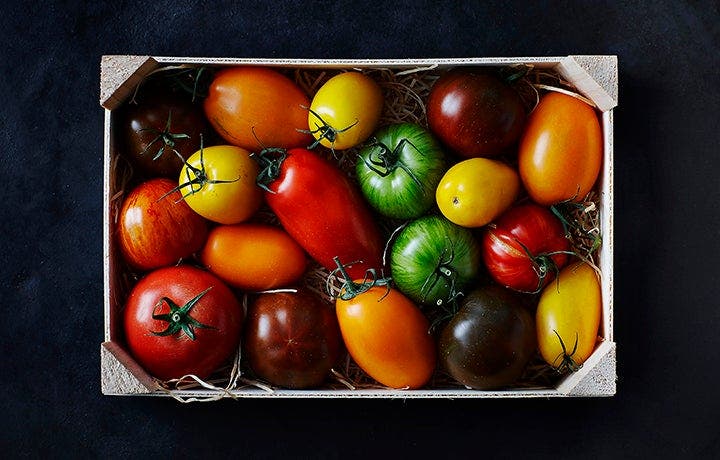

At their peak from June through September, tomatoes are as versatile as they are waistline-friendly. They’re a good source of potassium and high in vitamins C and A. Cooked tomatoes also provide lycopene, an antioxidant thought to reduce the risk of cancer, cardiovascular disease and macular degeneration. In fact, the tomato is the biggest source of lycopene in the American diet. And tomato lycopene absorption is maximized when tomatoes are cooked with little oil — think chili and spaghetti sauce.
Choosing and Storing
When buying, look for firm, deeply colored and blemish-free tomatoes that feel heavy for their size. Store stem-side down at room temperature, away from direct sunlight. And whatever you do, don’t put them in the fridge: cold turns the flesh mushy and drains tomatoes of flavor. Buy only what you’ll use within a few days.
Visual Buying Guide
More than 7,500 varieties of tomato are grown around the world, but only a handful are widely available. Keep our visual breakdown of tomatoes handy during your next trip to the farmers' market.

|
Beefsteak |

|
Vine-Ripened |

|
Heirloom |

|
Plum |

|
Campari |

|
Yellow or Orange |

|
Grape, Cherry & Pear These bite-sized varieties are ideal for salads and snacking, and perfect for kids. They’re sweeter than larger tomatoes and often have firmer flesh. Grape tomatoes are the most popular: They look like tiny plum tomatoes and are exceptionally sweet. Cherry tomatoes are round and slightly larger, with a little less sugar and a little more juice; they’re the ones that squirt when you bite into them. Pear tomatoes come in a variety of colors, with yellow and red most common, and are — surprise — pear-shaped. They, too, can be quite sweet, and are usually small enough to pop in your mouth. |
|
Green Tomatoes No, these are not the ones made famous by a certain book and movie. Instead, they’re fully ripe if still green—like Green Zebra tomatoes with stripes of lighter and darker green across its skin. Green tomatoes are moderately sweet. Many have a natural spiciness—not hot like a chili, but a slight peppery edge. Enjoy ripe, green tomatoes with sweet salad greens like Boston lettuce. Or slice them on turkey sandwiches with hearty, whole-grain bread. | |
|
Black Tomatoes Technically not “black,” these run the gamut from very dark purple to a deep, rich burgundy. They grow as small as ping pong balls or as large as soft balls. In general, the smaller ones are sweeter; but almost all black tomatoes have a certain umami quality, more savory than almost any other tomato. Because of their flavor, black tomatoes go beautifully in chopped summer salads with lots of raw, sweet sugar snap peas, green beans, runner beans, carrots, fresh lettuces, and tangy radish sprouts. |

